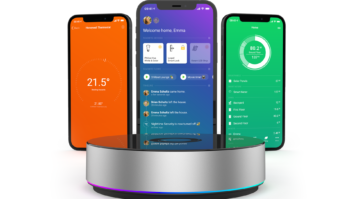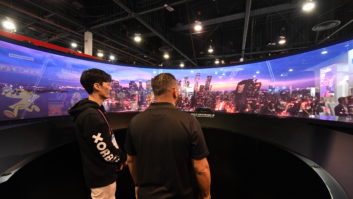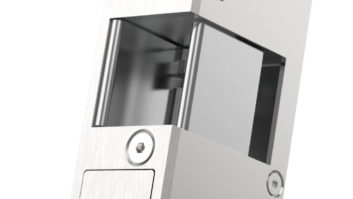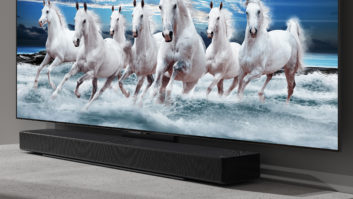Whereas owning a smart home was once reserved for the uber-wealthy or thought of as a Jetson’s-like fantasy, today it is a reality. In fact, studies show that over 70 percent of households own a smart home product across 30 different categories, showing that consumers are embracing it.
As smart home technology and adoption continue to grow and evolve, a CES 2023 panel session discussed the hottest trends and the coolest products in the smart home, and envisioned how it will evolve and develop in the coming years. The panel was moderated Melissa Matalon, VP of membership at the Consumer Technology Association, and included Joshua Roth, chief technology officer at Ring; Raya Sevilla, chief technology officer at ADT; and Melissa Andresko, global communications for Lutron.
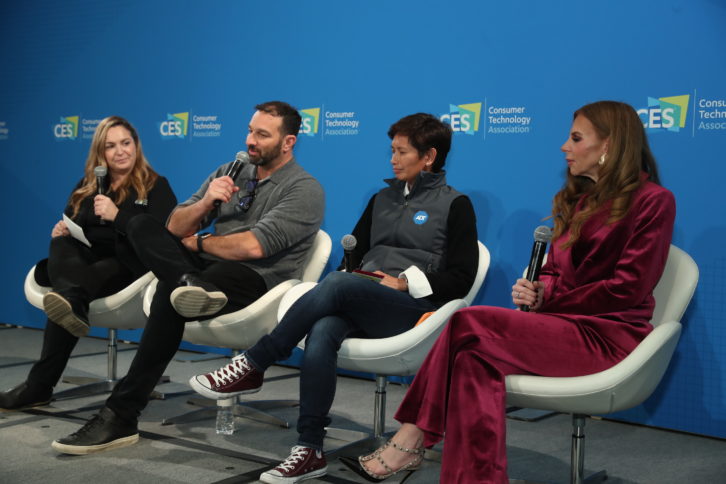
When asked, “How do you define ‘smart home’?” Sevilla noted that the definition of home is no longer a physical structure, but wherever the customer happens to be, and that technology should make peoples’ lives easier, simpler, and more convenient wherever they happen to be — at home, in car, or just walking around. “Where they are, and where they feel safe, that’s where their home is,” Sevilla said.
Andresko added, “If we look back 10-to-12 years ago, smart home products were looked at as gadgets, not as problem solving. Now it is problem solving like coming into a well-lit house or controlling audio throughout the house.”
But “smart home” isn’t a one-size-fits-all proposition. “It is a uniquely curated experience in the home that makes it magical for that person,” Andresko continued. “From the Lutron perspective, we make motion sensors that can automatically turn lights on/off as you enter a room. That could be a smart home to someone. To others, it could be a flagship home that has fully integrated systems.”
From the Ring side, Roth said it is important these products make things easier for consumers and that they provide a seamless experience. “We look at what items are inside and outside the house that can work better together, like a Ring camera with a Ring light. Ring’s goal is to create a variety of little magical experiences.”
Roth also predicts there will be a shift with things like dishwashers, refrigerators, washing machines, and other appliances taking advantage of smart home technology.
With Matter, a relatively new smart home connectivity standard aiming to ease connectivity and interpretability across disparate devices and platforms, receiving a lot of attention at CES, the topic of interoperability was discussed.
Roth said that they look at a lot of standards and they are encouraged by Matter, and excited by the opportunity of further integrations. He also noted that there are so many different players in the smart home space that having one standard that satisfies them all is difficult.
“We are excited about the promise of Matter, but that’s what it is now: a promise, “Sevilla said. “It needs to evolve and mature. The promise is there, but we’re all cautious.”
Sevilla added that the customer experience is what matters most. “It is still a little confusing on how customers set up devices, which apps they use, etc. We have Z-Wave, Zigbee, Thread, Wi-Fi, Bluetooth. It requires the customer to be the CTO of the house to set it all up, and it shouldn’t be that way. If the promise of Matter is fulfilled, my mom should be able to scan a QR code and simply set up a new device. With interoperability and a standard like Matter, there will be a time when all things will work together if companies agree to comply with that standard.”
Both Roth and Sevilla noted the potential impact of AI and machine learning (ML) on the smart home. Roth said Ring is using these technologies to train cameras to know what they are looking at and setting boundaries, alerting when packages are delivered or when people are coming onto the property. Roth said this will also improve motion detection to be more accurate and intelligent. “So, when it says there is a person there, there [really] is. Or when there is a car in the driveway, it can determine it’s not yours.”
Sevilla said we have to lean on AI, ML, and data to get to a smarter, safer, more sustainable, and easier home. “A lot of these products already exist; why not take existing products, be creative about it, pair them with ML, use the right algorithm, and find a new use?” she suggested. “The same motion detector that can turn on a light can tell you a parent got out of bed. Same tech, different use — that can open a new benefit.”
Sevilla said ADT is leaning into ML in all sorts of ways. “The security industry has a lot of false alarms, but newer technology has reduced these by over 50 percent. Now we are more accurate.” And because this isn’t sending first responders where they aren’t needed, it also makes it safer for everyone in the community. She also said ML will be used to detect presence. “Knowing the difference between a person and a dog, and knowing if that person is authorized to be there” is another way ML will make a smarter and safer environment.
Andresko commented on using technology to improve the lives of seniors or the disabled. “When you look at different things we can do with lighting — say, keeping hallway lights on overnight at 20 percent, or making sure mom and dad come into a well-lit house, or remotely monitoring the temperature to make sure it is good, or using automated shades to help those with disabilities let light in with the press of a button or even their voice. Technology can be used to help people age-in-place better.”
Roth said Ring is working toward purpose-driven cameras, which they expect to have in the next three to five years. Cameras that allow you not to have cameras in every room, but that can fly or travel to an area if it hears a noise or if a sensor is tripped to show what is happening.
“Our first principal is to take care of our customers,” Andresko said. “What are those other integrations our customers are looking for? We listen to customers to see what integrations will make their lives easier and more convenient, and the house more livable.”


